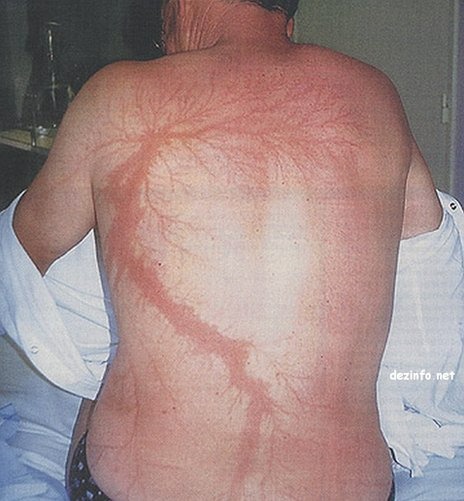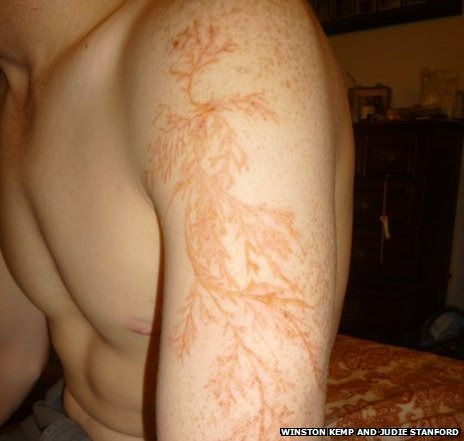
Lightning strikes can be terrifying and dangerous, but have you ever wondered what happens to someone who gets struck? While the experience itself is likely a blur for the victim, there can be some surprising after-effects.

One such effect is the appearance of Lichtenberg figures. These fascinating, fern-like patterns were first observed by German physicist Georg Lichtenberg in the 1700s. They form when electricity travels across a surface, and they can even occur on the skin of someone struck by lightning.

These electrical discharges cause tiny blood vessels under the skin to rupture, creating the branching patterns. Medically known as arborescent erythema or keraunographic markings, they’re sometimes called “lightning flowers” or “skin feathering” due to their appearance.
The good news? These marks are usually painless and disappear within a few days, as seen in the case of a 54-year-old man documented in the New England Journal of Medicine. He emerged from a lightning strike with these patterns across his arm, back, and leg, but they vanished entirely within two days.

Another interesting case is Winston Kemp, an electrician ironically struck by lightning while trying to save his pumpkins! He didn’t even realize it at first, but Lichtenberg figures appeared on his arm an hour later, followed by soreness and blisters. While his marks lasted longer (over a month), they eventually faded to a harmless pink color.

While Lichtenberg figures are undeniably cool, it’s important to remember that lightning strikes are serious. Many victims experience far worse consequences, with around 10% suffering fatalities and 70% enduring long-term problems.

So, the next time you see a storm brewing, remember: stay safe and avoid getting struck by lightning! These marks may look interesting, but they’re a reminder of the immense power of nature and the importance of seeking shelter during a storm.

Leave a Reply